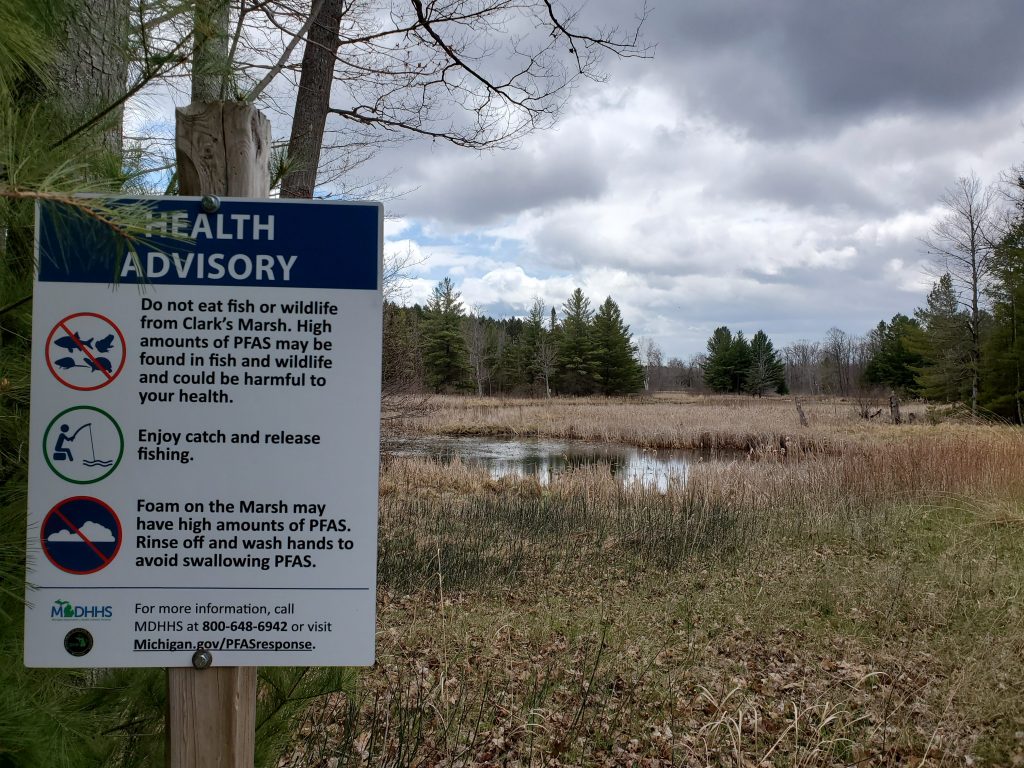by Jennifer Hill, National Wildlife Federation and Cathy Wusterbarth, Need Our Water
This is part of the Smart Project Series—stories published by Smart Great Lakes Initiative (SGLi) partners that explore current or future projects that sum up what it means to be “smart,” as established in the Common Strategy for Smart Great Lakes.
The Common Strategy is the key document of the SGLi and will be available for public comment Aug. 23-Sept. 24. Learn more and review the document.

PFAS contamination from the Former Wurtsmith Air Force base in Oscoda, Michigan is threatening the health of people and wildlife living in and around the former base. Recognized by the state in 2010 as the first PFAS site in Michigan, a decade later (in spite of the robust efforts of the local community to fight for swift action) little progress has been made to comprehensively clean up PFAS contamination.
A unique opportunity exists to better understand how, where and why PFAS contamination is appearing in water resources (including Lake Huron) in the surrounding community through the establishment of a Citizen Science Monitoring program for PFAS contamination in water.
The community of Oscoda, Michigan is home to vulnerable populations of people, with 15% of the population living at or below the national poverty rate, a lack of robust health care options, reliance by many on subsistence hunting and fishing from contaminated sites, and additional access challenges that make it harder for low income people to address the critical health impacts they may be experiencing from exposure to PFAS contamination. The Oscoda area is also in the heart of some of Northeastern Michigan’s most stunning natural resources, including the angler’s sacred ground – the Au Sable River – Lake Huron, and the community sits within the heart of the Huron-Manistee National Forest.
Securing a more comprehensive understanding of how PFAS is moving through the environment, including how it is affecting the people, drinking water, wildlife and iconic natural resources in the area like Lake Huron, are critical components to designing comprehensive clean up solutions.
The Oscoda community has the critical components in place within the community which are needed to establish a successful citizen science water monitoring program for PFAS contamination – including strong community support, partnerships with leading PFAS scientists, and a local laboratory pursuing the proper certifications for PFAS water testing.
Additionally, a citizen science monitoring program based in Oscoda presents the unique opportunity to contribute to understanding how PFAS contamination presents within iconic natural resources, including the Au Sable River and nearby Lake Huron. Lake Huron is located less than 2 miles from the known PFAS contamination plumes with a direct hydrological connection via discharge from the Au Sable River.
Lake Huron, the most under-monitored of the Great Lakes, is a logical first choice to expand our understanding of how PFASs are impacting the Great Lakes ecosystem, and the establishment of a citizen science PFAS monitoring program in Oscoda will be a step in meaningfully supporting on the ground communities as they seek to understand and implement sound solutions to PFAS contamination. Such a project could serve as a model for similar citizen science projects elsewhere in the Great Lakes region.